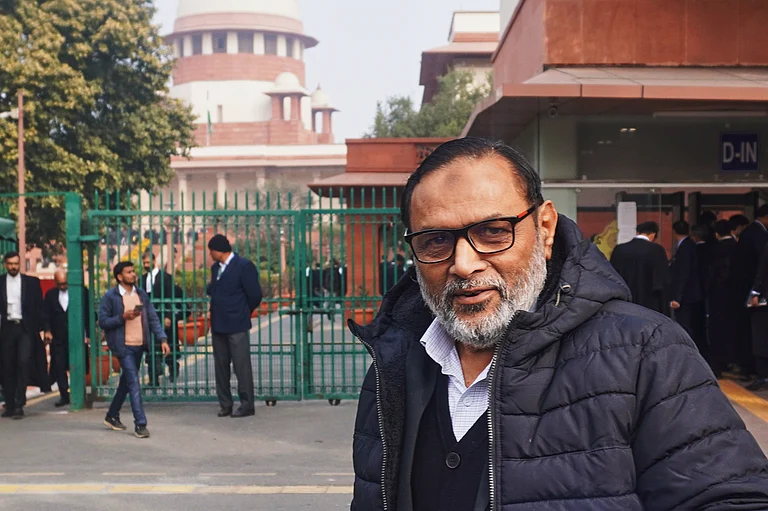Shinzo Abe's legacy skips from continent to continent. The former Japanese statesman who was assassinated at a rally in the city of Nara while campaigning for elections to Japan’s upper house on 8th July was a very consequential leader who left an indelible mark not just in Japan, but across the globe.
His legacy—while not without controversy—includes a broad range of accomplishments, from laying the foundation of Quad to reinvigorating its diplomacy to making Japan a more open and accessible country.
During his tenure as Prime Minister, Shinzo Abe made a bold stand to move Japan closer to the ideal many once assumed it would embrace, to battle for political leadership in Asia. Abe did so by scrapping some of the restrictions on military cooperation and activities abroad, increasing the country’s military budget, and deepening the alliance with the United States of America. Even more boldly, he moved to provide defence equipment to Southeast Asian nations, enhanced ties with India and its Prime Minister Narendra Modi, and increased Japan’s presence in the South China Sea, besides unveiling the defence cooperation initiative with ASEAN.
An early sketch of Abe’s vision emerged in a speech in 2007 in India, during his first stint as prime minister of Japan. He called for a “broader Asia” spanning not only the Pacific but the Indian Ocean as well—“seas of freedom and prosperity, which will be open and transparent to all.” Abe placed New Delhi at the heart of Japan’s strategy for Asia and the Indo-Pacific. New Delhi and Tokyo upgraded the status of their bilateral partnership and articulated a joint vision for the future of the region. Japan’s robust investments in India as well as its willingness to take up infrastructure projects in the sensitive Northeast served to deepen ties. In fact, The Government of India conferred the Padma Vibhushan award on Abe in 2021, accepting his large contribution to the development of bilateral relations.

Abe was the first world leader to elaborate the vision of a free and open Indo-Pacific. Abe laid the foundation for all of this by conjuring into being the famous “Quad,” or Quadrilateral Security Dialogue, in 2007, during his first Prime Ministership. He encouraged cooperation among the so-called Quad — Japan, the United States, Australia and India — to address emerging challenges in the region such as Climate Change and the growing dominance of China.
His government was a key player in promoting Indo-Pacific prosperity and security with the 2016 signing of the Trans-Pacific Partnership and the “Data Free Flow with Trust” initiative in 2019, establishing a global approach to digital data governance and security. With his vision of a "free and open Indo-Pacific," the politician raised awareness across Asia of China's ambitions abroad and strengthened economic ties between Japan and the region through an aggressive investment policy.
But institutional innovations that Abe spearheaded—namely, the Comprehensive and Progressive Agreement for Trans-Pacific Partnership (CPTPP) and the Quadrilateral Security Dialogue, or Quad—look likely to shape Asia’s geopolitical landscape for a long time to come. Under Abe, Japan was more active in numerous multilateral domains, articulating new standards for the digital economy and infrastructure investment; joining TPP and then leading its revival after the U.S. withdrawal; deepening strategic partnerships with Vietnam, and
other regional powers as well as extra-regional powers like the European Union and the United Kingdom; building a quasi-alliance with Australia; and upgrading Japan’s own defence capabilities to a large extent.
But it is in economic policy—especially his efforts to update and uphold global economic rules—that Abe arguably made one of his greatest marks. Out of a desire to revive economic growth in Japan, Abe promoted pro-growth economic policies. Always a deft political operative, Abe for years demonstrated just enough of a show of willingness to transform Japan’s economy. Abe pushed forth with an economic program called ‘Abenomics’, replete with the “Three Arrows” of monetary easing, fiscal expansion, and structural reform. Abenomics, sought to revitalize an economy that had previously long grown stagnant.
Abe reoriented the country’s decades-old approach to peace and security, reshaped its economy and place in the world, and elevated long-time legal norms and beliefs of civil discourse. He travelled incessantly to regional capitals across the world, in order to bolster Japan’s position. In the process, regional capitals began to view Abe as an alternative to Xi Jinping of China. He will be remembered for the memorable relations that he built with past and present world leaders — including Narendra Modi, Malcolm Turnbull, Donald Trump, Joe Biden Jr. and even Xi Jinping to name a few.
Abe’s death could not have come at a better time as the world faces the prospect of myriad crises: Russia’s war against Ukraine, nuclear proliferation in Iran and North Korea, and Chinese aggression in the South China Sea.
Abe leaves behind a country which is transformed, both domestically and in terms of its foreign policy.
(Aneesh Esteves is a journalist and a blogger based in Mumbai.)





















